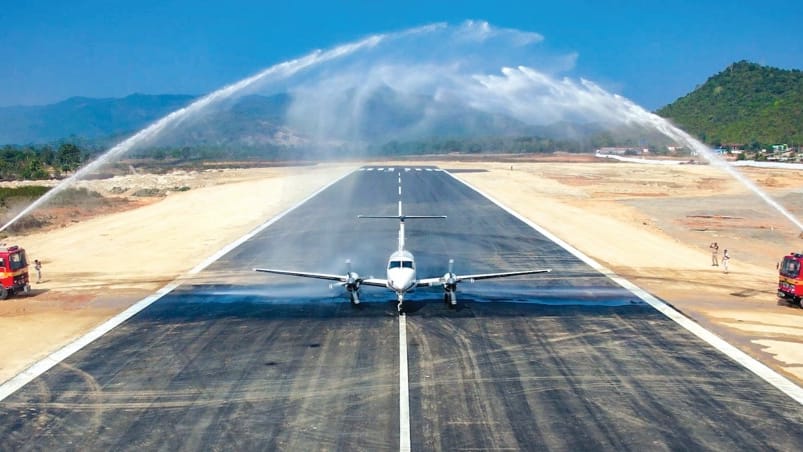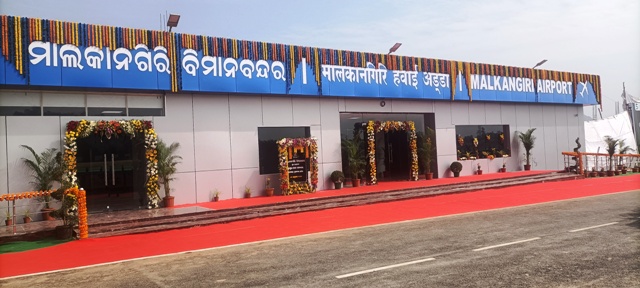Saaransh Mishra

In an era where governments have earned an ill-reputation for lofty narratives that seldom witness the light of the day, deviation has repeatedly been the norm in Odisha, owing to the concerted efforts of the Chief Minister. The Government of Odisha, under Shri Naveen Patnaik’s tenure of close to two and a half decades, has scripted unprecedented stories of transformation, against the strong tides of skepticism that the state has had to face from all corners due to its infamous perception as one of the most “underdeveloped” pockets of the country.
Instead, Odisha’s transformative model of governance in spheres ranging from education, sports, tribal welfare etc. is now being deemed worthy of replication by Governments, courtesy of the visible path of progress that it has facilitated the state on.

The Malkangiri airport, which is due to be inaugurated by the esteemed Chief Minister in January 2024, would be the latest feather in the cap of the Odisha Government when it comes to extraordinary developments that were almost impossible to conceive even as ideas, less than a decade ago. Barring this previously unimaginable feat in this so-called “backward” district which has now turned into reality, this also cements the Odisha Government’s commitment towards inclusive development; something that is one of the fundamental principles of policymaking but is usually de-prioritized by Governments.
The airport, which is the first in the state to be developed and operated by Odisha Government in the southern district, will connect the farthest district of the state with scheduled flights soon. Sources have speculated that the government is devising plans to provide airline subsidies that would make tickets more affordable for passengers, encouraging them to take flights more often. The flight is expected to be operational between Malkangiri and Bhubaneswar initially, with flights to and from Vishakhapatnam on the cards too.
Development of the airport in this district holds more significance than usual since scheduled castes and scheduled tribes form a vast majority of the population here. These are communities that have historically been downtrodden socio-economically for generations. The Government of Odisha, unlike a lot of other Governments, have been progressively prioritizing these communities through various innovative policies, schemes, and initiatives.
The airport will be one such initiative as it will help in boosting education and health services in a tribal-dominated district that is the farthest from the state headquarters, leading to greater social development as well as improved public health and life-expectancy in the region.
More connectivity with major economic centers within and outside the state, which is planned for the future of this airport, will help bring in more economic opportunities into this region from everywhere. Connectivity would generate more exposure for the population in this region which may encourage people from this region to venture outside the district for work opportunities too. These factors would eventually play a role in pulling the region out of the ditch of backwardness that it has historically found itself in.
The distinguishing factor about this airport is that it highlights the Odisha Government’s strong resolve to pursue a model of development that is not just restricted to urban areas, cities, and socio-economically uplifted communities. Initiatives such as these are very directly related towards transforming the present and future of communities that require the helping hand and assistance of the Government.
The Government has showcased time and again that its development agenda encompasses the masses and is all about making a real, tangible difference in the lives of communities and in areas where developmental initiatives are urgently required, instead of getting concerned about public perception and votes unlike the norm with other Governments.
Moreover, it is noteworthy that this project has been pursued in a manner where the families and communities affected by it are being taken care of, with the Government already having constructed houses for their safe relocation. This approach is praiseworthy given the current context where developmental initiatives have failed to account for the losses of local communities, monetary or otherwise, reinforcing that the Government’s priority to undertake development that is inclusive and sustainable.
An elected Government is one elected for all. Therefore, the developmental framework must encompass all too. However, the unfortunate reality of politics today is that development is solely prioritized where votes are. Nevertheless, the Government of Odisha has admirably shown time and again that development needs to be brought to all, and this is yet another bright example of it.
(Saaransh Mishra is an independent consultant dealing in HR, Media & Communication. Views are Personal)




























